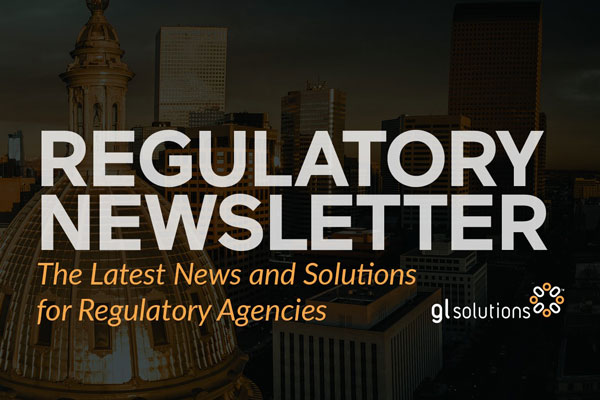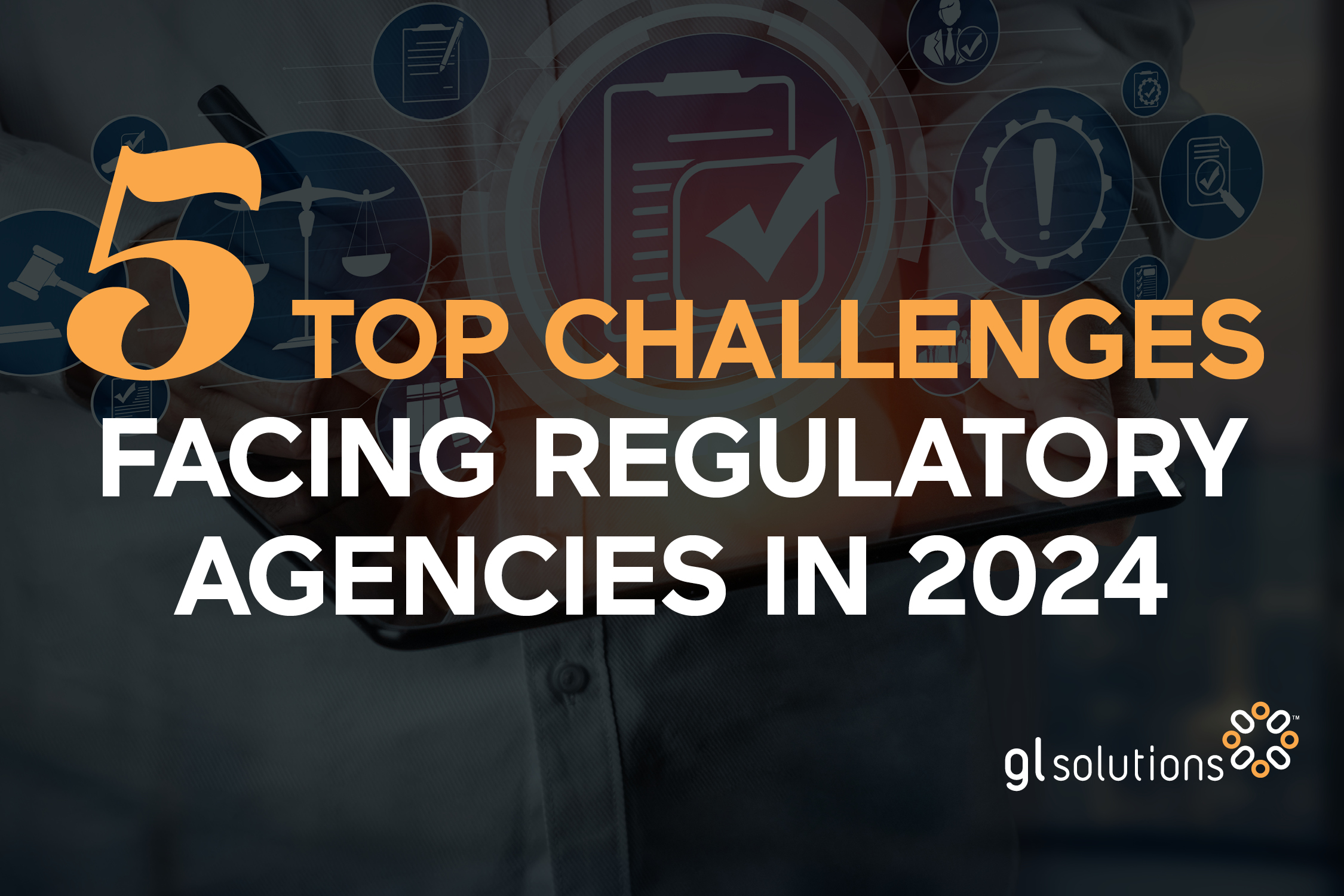State regulatory agencies face a myriad of challenges today as they navigate an evolving landscape marked by rapid technological advancements, increased public expectations, and a complex regulatory environment. Tasked with maintaining compliance with state laws and regulations, state regulatory agencies must learn to adapt to change while balancing public interests with economic considerations. Understanding today’s challenges enables agencies to proactively seek innovative solutions to improve their operational efficiency and effectiveness. This modernization approach not only ensures compliance with regulations, but also strengthens public trust and allows for a system that better adapts to future challenges. Learn five of the top challenges facing regulatory agencies in 2024 and ways for your regulatory agency to overcome them.
1. Resource Constraints and Budget Limitations
One of the primary challenges that state regulatory agencies face is resource constraints and budget limitations. State regulatory agencies often operate with limited financial resources, which can impact their ability to hire and retain qualified staff, invest in technology, and conduct thorough inspections and investigations. As a result, your agency may struggle to keep changing regulations.
Solutions:
To address this challenge, explore partnerships with other government entities, industry associations, and academic institutions to leverage additional resources and expertise. Advocating for increased funding and resources from legislative bodies can also help alleviate some of the financial constraints that your regulatory agency may face.
2. Complexity of Regulatory Compliance
The complexity of regulatory compliance poses another significant challenge for state regulatory agencies. As laws and regulations continue to evolve, your agency must navigate a complex web of requirements and standards. The complexity makes understanding and adhering to your regulatory requirements challenging, leading to potential compliance gaps and enforcement issues.
Solutions:
Instead, focus on enhancing communication and collaboration with regulated entities. Provide clear and accessible guidance. Conduct educational outreach programs. nd And offer compliance assistance to help businesses and organizations better understand and meet regulatory obligations. Finally, leverage technology solutions and modernize your agency with regulatory software that streamlines compliance processes and improves transparency.
3. Evolving Public Needs and Expectations
In today’s dynamic landscape, regulatory agencies must continuously adapt their policies and practices to align with evolving public needs and expectations. Values around consumer protection, privacy, and ethical standards are rapidly changing. For example, as digital technology becomes more embedded in daily life, public concern about data privacy and security has surged, prompting calls for stricter regulations to protect personal information.
Similarly, there is a growing demand for greater transparency and accountability from businesses, particularly in sectors like finance and healthcare, where decisions profoundly impact individuals. This shift in public sentiment requires regulatory agencies to not only enforce existing laws but also foresee potential issues and develop proactive measures to prevent harm to individuals.
Solutions:
Leveraging technology helps your agency more effectively monitor compliance, analyze trends, and engage with the public. The right regulatory agency software solution facilitates greater public engagement through digital feedback mechanisms, enhancing both transparency and accountability. Automated processes and self-service digital solutions streamline your agency’s interactions with the public, reduce bureaucratic delays and ultimately, improve service standards.
4. Adoption of AI Technology in Regulatory Processes
The rapid advancement of technology, including artificial intelligence (AI), presents both opportunities and challenges for state regulatory agencies. While AI and technology enhance your regulatory efficiency and effectiveness, they also require significant investment, training, and integration into existing processes; proper implementation ensures your agency keeps pace with technological advancements. Let’s look specifically at the role that AI increasingly plays in state regulatory agencies.
Benefits of AI in Enhancing Regulatory Processes
Incorporating AI into your regulatory processes offers several advantages. One of the primary benefits is the ability of AI to analyze vast amounts of data with unparalleled speed and accuracy. This capability enables your agency to efficiently monitor and enforce compliance with laws and regulations, thereby enhancing overall governance.
- AI detects patterns and anomalies that elude human observation, thereby strengthening the detection of fraudulent activities and non-compliance.
- AI-powered systems streamline administrative tasks, such as document processing and information retrieval, leading to significant time and cost savings for regulatory agencies.
Ethical Considerations and Challenges in AI Adoption
Despite the promising benefits of AI, its adoption is not without several ethical considerations and challenges.
- One concern is the potential bias in AI algorithms, which can inadvertently perpetuate existing societal inequalities.
- Another issue is how the data is used and handled. Government and regulatory agencies are entrusted with sensitive information, and the responsible handling of this data is paramount.
- The rapid pace of technological advancement also poses a challenge in keeping regulatory frameworks abreast of AI developments.
Solutions:
While the benefits of using AI in your regulatory processes are promising, ensure that your agency navigates the ethical considerations and challenges associated with AI adoption. To harness the full potential of AI and other digital tools and improve regulatory outcomes, prioritize investments in technology infrastructure and workforce training to build your agency’s technological capabilities. Collaborate with industry partners and technology providers to facilitate the adoption of innovative solutions tailored to meet your regulatory needs. By embracing technology, your agency streamlines processes, automates routine tasks, and gains valuable insights from data analytics to enhance decision-making.
5. Integration of New Technology
Selecting and implementing regulatory agency software streamlines operational efficiency and boosts your agency’s effectiveness. First, identify a regulatory software solution that aligns with your agency’s unique needs. Next, integrate the new software into existing systems and workflows.
Solutions:
To overcome this challenge, conduct thorough assessments of your operational needs and identify regulatory agency software solutions that best fit your requirements. Prioritize user-friendly interfaces, scalability, and interoperability to ensure seamless integration and adoption of new software. Provide comprehensive staff training and support to facilitate a smooth transition and maximize the benefits of the new software.
In addition to these five major challenges, state regulatory agencies may encounter a myriad of other obstacles in fulfilling their regulatory responsibilities. Other challenges include political pressures, public scrutiny, evolving industry practices, and emerging risks. To effectively address these challenges, regulatory agencies must prioritize transparency, accountability, and stakeholder engagement. By fostering a culture of continuous improvement and adaptability, state regulatory agencies proactively respond to emerging challenges, ensure the integrity of regulatory processes, and simultaneously safeguard public interests.
Modernize Your Regulatory Agency to Best Meet Today’s Challenges
State regulatory agencies face numerous challenges in today’s complex and ever-changing landscape. From managing licensing and permitting processes to ensuring compliance with laws and regulations, agencies constantly seek ways to improve efficiency and streamline operations. By leveraging innovative regulatory agency software like GL Suite software from GL Solutions, you can meet several of these challenges head on. Our tailored software solution enables your agency to automate business processes, better meet the needs of the public, and free up staff time to focus on more complex issues. The transition to a digital solution offers a clear path toward improved governance and better customer service.
Run, Grow and Adapt
Subscribe to our newsletter to receive the latest regulatory news delivered to your inbox each week.
GL Solutions helps governments run, grow and adapt. To learn more, explore our website, call us at 800.930.1193 or email us at hello@glsolutions.com.


